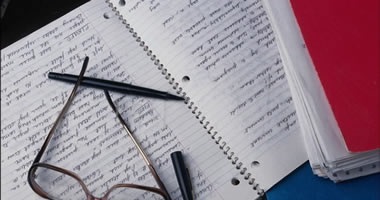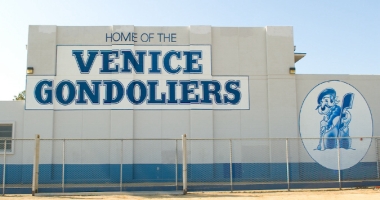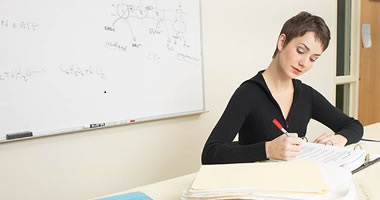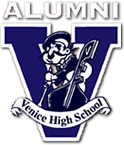The Aves Scholarship
A Philanthropist and Entrepreneur who led an Extremely Interesting Life!
For Your Reading Enjoyment!
Fredrick J. Aves
A Philanthropist and Entrepreneur who led an Extremely Interesting Life
by Grant Francis
After I retired from teaching at Venice High School for thirty-five years, I
became interested in the Venice High School Alumni Association, and
particularly about the large amount of money donated to the scholarship
program each year. I later became the president of this alumni association
which inspired me to find out what started this donation tradition. I found
out that it was a very large donation to the fund by a man by the name of
Fred Aves. I wanted to find out more information about this gentleman, and
thus started my quest during 2018.
The information in this article was obtained from interviews conducted by
Grant Francis, a board member of the Venice High School Alumni Association.
The interviews were held during 2018 with Fred’s children Russell, Donald,
and Julie. Also interviewed was David Macvicar a good friend of Fred’s who
graduated from Fairfax High in 1938. David was 98 when the interview took
place. Dennis Erickson, a Venice High School graduate of 1965, who worked
for Fred, also graciously provided information. After talking with all of
these people I have discovered that Fred Aves was a true Renaissance Man,
ahead of his time. A man who thought outside the box. He was a designer,
inventor, manufacturer, and curious about everything, not unlike the names
of Thomas Edison, and Eli Whitney.
Fred Aves was born on February 6, 1912 and lived with his parents, Frank and
Ida, outside Chicago. Fred did not do well in the traditional school in
Kirkland, so he was enrolled in the School of Engineering in Chicago. Here
he started his education and developed his true interest and great
appreciation of industrial arts and mechanics.
Fred met his first wife, Arlene Menz, while attending high school in
Kirkland Illinois, where his grandmother lived. She was very impressed by
Fred’s debonair attitude, and quickly fell in love with him. They got
married in 19, after he finished going to a trade show in Chicago. They had
three children: Russell, Donald, and Julie.
Fred moved to the west coast with his father while still in high school
While living in Venice, Fred attended Venice High School, and became very
interested in electricity. He took several classes from Mr. C. Amo, the
electric shop instructor. This teacher- student relationship grew very
strong during the time that Fred was in school. Fred was inspired by Mr. Amo
to think creatively. He had a very creative mind and was always thinking up
new ideas for useful products. Fred learned at a very young age about being
an innovator and inventor.
It was during this time that Fred met Dale Erickson in the same shop class.
Both boys had a passion to figure out how things worked, in electricity and
mechanics, and because of this common interest, theirs became a lifelong
friendship. Fred graduated from Venice High in 1930. During his senior year
he was voted as part of “a group of scientists to find a way to harness the
hot air from congressmen.” It was his class that gifted the flag pole,
(which was once a ships mast), that still stands proud in front of Venice
High School.
Fred’s first part time job was working for Jack Comsilides of Jacks at the
Beach parking cars, fixing radios, and making sandwiches before there were
any restaurants on Ocean Park Pier.
Upon graduation from Venice High School, Mr. Amo got Fred a job at Culver
Studios which later became MGM, then Desi Lu studios, down the street on
Washington Blvd. He did not last very long at the studio because sorting
films had nothing to do with his passion for electricity.
Fred started his first real business, Aves Electric Company (AECO), in 1934
in Beverly Hills, in the back of Baker’s Electric, where Fred specialized in
appliance repair. His high school buddy, Dale Erickson, also worked in the
shop repairing appliances with Fred and would go out on service calls with
Fred. Many of their clients worked in the motion picture industry and were
quite wealthy. When they would make a house call they would pick up the
appliance that needed to be repaired, take it out to the van and immediately
start thumbing through the repair manuals to figure out how to fix it. The
two guys would repair the broken appliance in the van and return it the same
day making many happy customers.
In 1939 a cousin of Fred’s, by the name of Dorothy Maxwell, came out from
Kirkland to visit Fred and Arlene. Fred offered her the job of handling his
books and scheduling house calls for AECO. Dorothy met Fred’s high school
buddy Dale, who had been working at the shop. They got married in 1941, and
had a child by the name of Dennis, who was interviewed for this story.
During World War II, Dorothy kept AECO going while Dale went to work for
Douglas Aircraft in Santa Monica, and Fred got a job working at Littelfuse
Inc. an electronics manufacturing company, in El Monte. This satisfied both
of their draft deferments. After the war ended in 1945 Fred resumed his work
at AECO. Although Fred was very creative, inventive, and very focused, he
did not treat his employees very nicely, nor did he get along with many
other people. There was one person that he continued a good relationship
with and that was with his old high school buddy Dale Erickson who he still
had working for him.
Fred’s first successful electronics product invention was an aircraft light
bulb tester, known as a “light shutter and dimmer”. All aircraft have light
bulbs in the instrument panels that let pilots know when certain functions
have been completed. Functions like flaps down, or when the wheels are
locked in place for landing. During flight the pilot has no means of knowing
the status of these bulbs. Fred identified the problem and designed a system
that would test the bulb and indicate when a light bulb was burned out while
the pilot was flying. In addition to designing this system Fred also
designed and built the machinery to manufacture the system and its parts.
This was the first of his many patented products, starting in 1944.
Fred’s friend David Macvicar, who was a returning Navy pilot, was ambitious,
and would become a long-lasting friend to Fred. They both spent some time at
Dale and Dorothy’s apartment on Exposition Blvd. Dale had a metal lathe in
his garage, and they both loved watching Dale use the lathe. David soon
picked up those skills himself. David made some nice projects on this lathe,
but Fred was more interested in the byproducts that were being produced that
laid on the floor waiting to be tossed into the trash. Fred loved those long
spiral shaped strands of metal being formed with each cut of the lathe. He
took these long metal spirals and invented the curb alarm, which became not
only his second patent, but the start of his first big manufacturing
business. Curb alarms, feelers, or curb finders are spring like wires
installed on a vehicle which act as “whiskers” to alert drivers when they
are the right distance from the curb while parking. The devices are
installed low on the body, close to the wheels. As the vehicle approaches
the curb, the protruding feelers scrape against the curb, making a noise and
alerting the driver in time to avoid damaging the white sidewall tires,
wheels or hubcaps. The feelers were manufactured to be flexible and do not
break easily.
In 1947 Fred rented, and later purchased, his own building in Los Angeles at
2010 Westgate Ave. near Olympic and Bundy. This is where he moved AECO. He
not only made the curb alarms, but also designed and made the machines to
make them, including the automated chrome plating machines, and packaging
machines. From curb alarms came a number of other products and patents that
AECO produced including: chrome exhaust tips, and personalized license plate
frames with the dealer’s names on them. At this facility Fred designed and
built the longest chrome plating tank in the state of California. During
this time Elaine McVickers, David’s wife was hired to work at AECO, in the
retail part of the store.
The next product and patent to come out of AECO, in 1948, was the remote
controlled right side rear view mirror for passenger cars. Fred invented and
designed that product, and built the machines to manufacture these mirrors.
Since AECO was becoming quite successful with these automotive aftermarket
products, and Fred had good reliable people running the business, Fred
started looking for more adventure.
In about 1955 AECO expanded from Westgate to a one acre property at 4211
Redwood Ave, near Venice High School. Fred bought this large piece of
property with his son Russ. Here they built a standard wood frame building
on the front of the land for his manufacturing group.
Fred helped his old friend, David, build a 28-foot boat on the back of the
Redwood property. There were a lot of wooden boats being built at this time
with the new marina under construction just a few miles away. What made this
boat so unusual is that it had a Cadillac V-8 inboard motor driving it. Don,
Fred’s son, remembers going on a fishing trip to Catalina with both David
and his dad, while he was a freshman at Cal Poly. Don remembers the motor
cutting out from fouled spark plugs. They got it running just in time to
prevent the boat from running ashore on the beach. They all had a very
exciting time, and he does recall them catching at least ten nice yellow
tail tunas.
David Macvicar calls Fred one of the three geniuses that he has known
throughout his life. He was always thinking of the next project that he
wanted to create. Fred became a self-made man who had an incredibly
inventive mind. In all of the years that David hung out with Fred he never
once heard him use a swear word, nor utter any obscenities.
Fred was intrigued by the construction business. He went to UCLA to take
classes in how to build reinforced concrete buildings. He was particularly
interested in the “Umbrella Column” type of concrete structures.
In 1964, he took his plans to Building and Safety to build a second, much
larger three-story, ten thousand square foot building on the back of the
Redwood Ave property. He was turned down, so he hired an engineer to modify
his plans. They were finally approved. This structure was made out of
reinforced concrete, which Fred’s son Russ was instrumental in helping
build. As Fred was pouring the concrete he got very impatient with the
amount of time needed between pours for the inspection process to occur. He
sent his accountant, Jack White, to UCLA to become a concrete inspector.
This got Jack more work, but more importantly, there were no more delays in
completing his building on the back lot on Redwood Ave.
After years of being in business, he was now starting to make good money, so
Jack White suggested that he invest that money. He took Jack’s advice and
started diversifying his investments.
Fred became interested in wine and took a class at UCLA, with his friend
David, to learn the art of wine making. He and David took a trip to the wine
country in northern California, and bought several cases of grapes and
brought them back home to put what they had learned to work. Fred became
interested in growing grapes so he bought a piece of property in the
foothills of Beverly Hills. He built a home with several rock walls and
terraces in the side of the hill, with his son Russ, for his family to live
in. He planted a few varieties of grapes but they never proved to be
successful. He also built a wine cave in the side of the hill to store the
small amount of wine that he would eventually make. The wine was
satisfactory, but he needed more room to grow the grapes, and a bit more
experience.
In 1970, he made a very bold decision and went north to the wine country of
Napa and bought 88 acres in Calistoga. He built a log cabin for himself, and
added a small house in the rear for a caretaker. He also bought a house
nearby for his son Russ and his family to live in and later manage the
winery. Although Fred divorced his second wife Betty, they remained friends.
She ultimately returned and worked for him in his office.
The business endeavors in Los Angeles were becoming so successful that he
went a little further south in the wine country and bought another 100-acre
piece of property on Spring Mountain Road in St. Helena, in northern
California. He built another larger two-story home on this property, with
his son Russ, this time out of stone. The plans were so involved that it
soon became a castle. It had a basement that would be used as a wine cellar,
an artist’s studio, and for a boiler to heat the house. It took ten years to
complete the house, during which time Fred lived in the log cabin in
Calistoga.
He hired a stone mason from San Francisco, by the name of Louis LeTulip, to
do a major portion of the stone work on his castle. Fred designed and built
a machine to split the large boulders that were brought to the property. For
his kitchen, Fred designed and built several very large circular cast iron
doors for the appliances and cabinets. He also designed and built an iron
spiral staircase which was used to get to the second story, and several very
unique stained-glass windows that adorned his stone castle. This castle
became known as Yverdon, named for the place of his grandmother’s birth.
Taking his previously learned skills of making concrete buildings, he built
a winery on the Spring Mountain Road property, using the same three-story
floor plan that he had used for the building on the Redwood Ave. property.
He designed the elevators that would take the product and people to and from
the different levels of the building. Fred established the Aves
Philanthropic Foundation which ran the winery and eventually sold it to
Kendall Jackson.
In 1978 Fred sold both businesses on Westgate Ave. and Redwood Ave., but
kept the buildings. He had to figure out what to do with these three empty
buildings, which remained empty for several years. Even though it is well
documented that Mr. Aves did not have many social skills, there is one story
that points out how kind and giving Fred was. When the plant on Redwood Ave.
was finally sold and closed its doors, he gave all of his employees a
lifetime monthly pension.
The Redwood Ave. property with its two large buildings, was too big for most
potential buyers. Both Fred and Dale thought long and hard about this
problem and finally figured out that the most efficient way to take
advantage of this space was to use it for self-storage. Fred ran with this
idea and hired Dale to convert the two-story concrete building on the back
of the Redwood property from three stories into five. Dale built new steel
floors between the existing concrete floors and built individual storage
units, with doors and locks, and started renting out the newly developed
1,000 individual spaces. This is where Fred made his fortune. He started the
self-storage industry on a large scale, with Marina Redwood Self Storage on
Redwood Ave. In 1978 Fred made a small apartment for himself on the second
floor of the front building on Redwood.
Dennis’s wife, Barbara, worked at the Bank of America and Fred would always
come to her to make his deposits because she was friendly and interested in
his work. While at the bank one day Barbara got involved in conversations
about the bookkeeping of Fred’s company. She ended up managing Marina
Redwood Self Storage for 17 years, starting in 1978. She seemed to be one of
the few people that Fred would listen to. On the other hand, David’s wife
Elaine worked for Fred as a bookkeeper for $150 per month. Unfortunately,
she, like many others, had several issues with the boss, including her low
wages, and did not stay very long.
During this time in the early 1990’s Fred became enthralled with physics and
began writing papers on how poor our economic regulations were, the movement
of the planets, and how modern physics had it all wrong. He had a lot of
ideas that he put on paper but it took his ex-wife Betty to help with his
grammar, sentence structure and spelling. He wrote on these subjects for
about ten years and finally published a book in 1992. The title was Big
Spark. By the way, Fred also painted the picture on the cover of the book of
a horse head. It was during this period that Fred also expressed himself
through his art. He became very proficient at sculpting in Bronze. He made
several sculptures including one of Robert Louis Stephenson “Marching Song”
where he is sitting on a log, which is about 20” tall. He also sculpted
several life-sized busts of famous wine makers of the region.
Fred was a gourmet cook and loved traveling to foreign countries to sample
their foods and wines. He took several trips to Paris to dine at fine noted
restaurants. He was known to bring those Parisian recipes back home to share
with his family. It is not clear which came first, his desire to create a
gourmet kitchen, or the food he created in that kitchen. During these Paris
excursions, he would talk with David about his desire to give some of his
wealth to Venice High School when he died. Fred was remembered for his
lavish Christmas meals that involved the whole family in the preparations.
He handmade all of the Christmas cards one year, that he gave to his friends
and family.
When Fred was in his seventies he designed, built, and installed the copper
roof on the winery on Spring Mountain Road in St Helena. He also built an
elaborate tasting room as part of his winery, with huge stained-glass
windows that he built. He had very few visitors, because he seldom invited
anyone over to promote either himself or his wine.
Fred kept in contact with his mentor and former teacher, Mr. Amo, from
Venice High, by visiting him after Mr. Amo moved to Mexico. He later helped
him finance his move to a rest home in Corte Madera, north of San Francisco.
On several occasions during the 1980s, Fred would go to the rest home, or
someone would bring Mr. Amo up to his home on Spring Mountain Road. Fred
loved to show his mentor his home, which was a fine work of art. Julie,
Fred’s daughter, was fortunate to have been able to spend some time talking
with Mr. Amo, learning about one of his favorite students, before he died.
Fred’s daughter Julie, still living in Santa Rosa, told me of having the
pleasure of meeting a proud recipient of one of the Venice High School
Alumni Association Aves scholarships.
Before Dorothy died she had a nurse/care taker who cared for her. During
their talks, the care taker would mention her daughter, who attended Venice
High School. When told of her daughter receiving a scholarship, Julie shared
her stories of how these were started by her father.
Dennis, who now lives in Fallbrook California, still owns the dinner bell
that was used to call the workers in from the farm back in Illinois. His
wife still uses that bell to bring him in from his plot of land. He and his
wife Barbara now own and work a small vineyard.
David McVickars started his business, Trader Boys Office Furniture, on Pico
Blvd in 1949, and the company is still in business today.
Don remembers finding some old papers after his dad died, that showed Fred
donated $10,000 to Lee Iacocca to help him get nominated for president.
Fred died in December of 1997, donating much of his money to the Venice High
School Alumni Association Scholarship fund. Fred wanted that money to be
given to the students in the Industrial Arts program, in remembrance of his
teacher and mentor, Mr. Amo. He specifically wanted the funds to go to
students who plan on going to college to further their education in the
Industrial Arts. He also made specific instructions that some of the money
be given to the young people from the cosmetology classes, as his mom was a
hair dresser.
It is truly amazing that Fred Aves was able to accomplish so much in one
life time.
When Fred Aves attended Venice High School in the thirties, there were as
many as 15 different Industrial Arts classes that he had to choose from.
Like many of his classmates they were all able to take these skills and
knowledge that they acquired in these classes and get jobs right out of high
school. Unfortunately, today there is only one of those Industrial Arts
classes left.
1/4/2020















